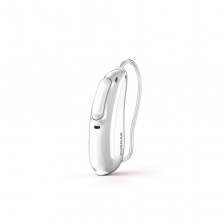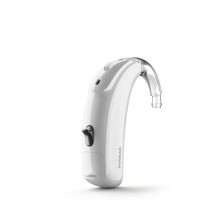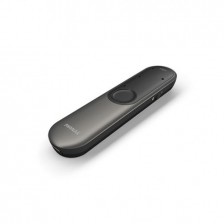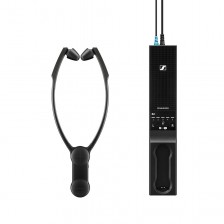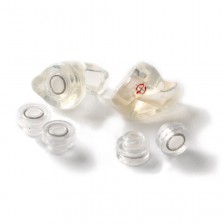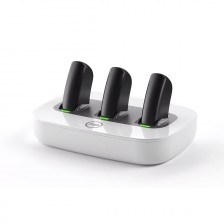What is a cochlear implant?


If when you hear about a cochlear implant you have thought about a hearing aid, we have to tell you that they are two very different devices. The implant itself is able to do the work of the inner ear to send the sound interpretation to the brain. We'll explain more about its characteristics and how it works in the ear.
How is a cochlear implant different from a hearing aid?

We don't think it's a surprise to anyone if we firmly confirm our belief in the power of hearing aids. Many people suffer from hearing loss and have seen their quality of life improved dramatically thanks to these devices, whose technology, moreover, only advances day by day, and who knows what the future holds for us in this regard.
That said, we are also aware that sometimes, unfortunately, there are cases in which the hearing loss is so severe that hearing aids are not enough. The basis for the functioning of hearing aids is the amplification of sound, but when there is not even a residual amount of hearing capacity, such amplification will not generate any positive results for the person concerned. This is where cochlear implants come in.
The hearing aid has the function of amplifying sound. So to speak, it increases the signal received by the sound waves so that they can be processed by the middle ear. In addition, it can be removed whenever necessary.
In the case of the implant, the operation is very different. The implant replaces the cochlea or damaged parts of the inner ear. It processes the sound that is received and sent to the brain for interpretation. The basis of the cochlear implant is to generate a sensation of sound in the affected person by means of direct stimulation of the auditory nerve. That is to say, we are not talking about recovering the hearing capacity, but about giving the opportunity to deaf people or people at the threshold of deafness to perceive the sensation of sound by means of a "bridge" that bypasses the damaged part of the ear.
How does a cochlear implant work?
The cochlear implant is directly connected to the auditory nerves, so it can transmit sounds directly to the brain. This is the process is carried out in three steps, which are:
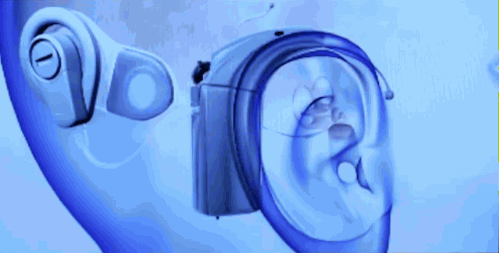
- Capturing sounds. The device behind the ear picks up the sound and with it creates a digital sequence.
- Sound transmission. Once the sound has been received and coded, it is sent through an external coil to the implant, where it is converted into electrical impulses and sent to electrodes located in the inner ear.
- The reception of sound impulses. The sound, converted into electrical impulses, is sent through the auditory nerve, just as it would have happened naturally.
The cochlear implant consists of two components, one external and one internal. This second is surgically inserted into the inner ear and attached to the outer ear by a powerful magnet.
This external part contains a microphone, a speech processor and a transmitter. Aesthetically it is not very different from a BTE hearing aid. Its operation is quite simple to understand: the microphone picks up acoustic signals and sends them to the processor for analysis and digitization. This digitized signal is then sent to the transmitter, which encodes it and sends it to the receiver of the internal component of the cochlear implant.
As we have just mentioned, the internal part of the implant contains a receiver, which collects the signals it sends to the transmitter and transforms them into electrical impulses. These impulses are received by the electrodes, implanted during the surgical operation in the deepest part of the inner ear, and these are in charge of directly stimulating the auditory nerve through a part of the cochlea and, finally, the brain will be in charge of translating these signals into the form of sounds.
Cochlear implant operation and post-surgery

First of all, anyone, whether an adult or a child, who wants to have this surgery must pass some tests to ensure that they are a candidate for a cochlear implant. These tests are not only auditory, but also psychological and medical, and are done to make sure that the patient in question will really benefit from this operation. In addition, candidates will also receive therapy sessions so that they understand that the post-operative follow-up process is quite long.
The operation itself is not too long, lasting between 2 and 4 hours, although it must be mentioned that during this part of the process the cochlear implant is not yet activated. First, the area affected by the surgical operation must be healed, which requires some time. It is after this period of time that the external component of the cochlear implant will be placed and when the specialist will proceed with its activation. From here, the process of implant adaptation will begin.
Without a doubt, we are in front of a great help for those people who suffer from extreme hearing loss and, although it is a slow process and still far from perfect, getting someone to hear the voice of their loved ones again is undoubtedly something worth fighting for.
Is a cochlear implant better than a hearing aid?
The truth is that the two systems cannot be compared. In cases where hearing loss has occurred, a good hearing aid will suffice. If they are more severe, when the inner ear is really damaged or simply doesn't work, the solution is a cochlear implant.
you have hearing complications, it is best to have a specialist determine the degree of affectation and the measure to be taken. At Claso we have hearing experts who can help you solve your problem. You can visit us or make an online consultation whichever you prefer.


